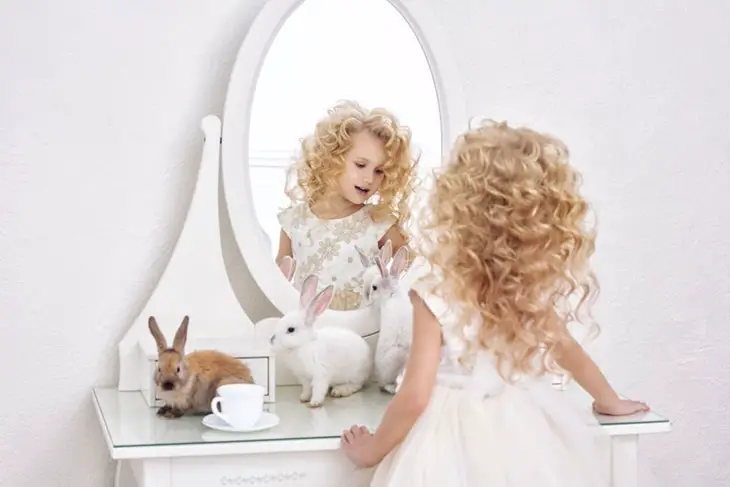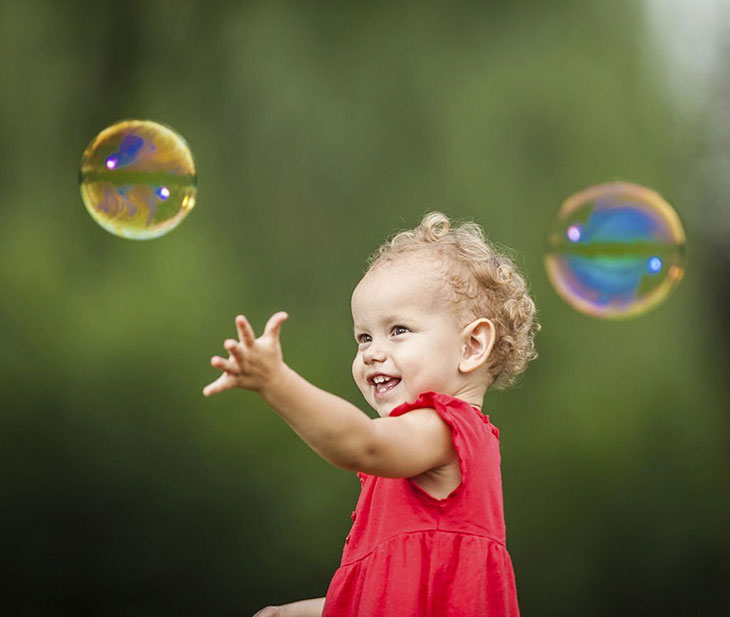When do babies hair start to curl? Many parents may wonder about this issue among thousands of amazing things happening to their newborns.
There are stages of growing hair that can turn the structure from straight to curly and vice versa.
In my article below, let me explain these stages and signs that a baby will have curly hair so you’ll understand it better. Scroll down for more right now!
When Do Babies Hair Start To Curl?

Some babies are born with cute curls, while others will show this characteristic a little bit later. The baby’s hair texture usually changes before 24 months.
After reaching the age of two, your toddler’s strands are terminal.
When does baby hair get curly?
The signs of curliness can appear in 3 fast stages of growth. To come to the final conclusion, you need to wait until the toddler stage when the strands’ structure is more stable.
Baby’s Hair Growing Stages
When does baby hair start to curl? Let’s go through three phases or stages of hair growth to find out in detail!
Newborn Stage/ Lanugo Hair
The first stage is when your baby has just been born with little or no strands. Your newborn will have thin locks, and their hairs will fall out and grow back quickly.
This phase usually lasts for around 3 months.
It’s called Lanugo since this soft hair grows from the baby’s whole body and head follicles. This type presents at the 5th month of gestation and can affect fetal hormone development.
Lanugo will disappear during the last pregnancy period. It will enter the amniotic fluid, yet some babies can be born with these strands.
You can see the typical telogen hairs, but they will be gone after a few weeks.
Infancy Stage/ Vellus Hair
It’s the stage when true strands start growing, and their texture may change during this period. The phase will be from a few months to one year (typically, 6-12 months).
Since during the stage changing, Lanugo drops, your baby’s lock will get thinner and less dense.
Vellus in Latin means thin, indicating short-strand hairs from this type of follicle can fall out easily.
In most cases, the strands in this phase are straight and can be changed later by the puberty hormones. In some other situations, it’s possible to see curliness at this stage.
Toddler Stage/ Terminal Hair
Your toddler will enter this phase when they are around 1 year old, but it can differ depending on the baby’s gender and growth pattern.
And this stage will last for 1 year until your toddler is 2.
When do babies’ curls come in? The texture of terminal strands starts to set in during this period. These long strands can be straight or curly, depending on different toddlers.
Signs That Your Babies Will Have Curly Hair

The Old Wives’ Tale Of Heartburn During Pregnancy
Can babies be born with curly hair?
The old wives’ tale connects the curly-haired babies and heartburn during the mothers’ pregnancy. It may sound odd, but the researchers at John Hopkins University proved it otherwise.
The survey showed that over 80% of pregnant women suffering from heartburn gave birth to their children with curly hair.
Meanwhile, the hormone affecting hair growth is also proven to cause gastric acid secretion in mothers.
In brief, if you experience serious acidity issues while pregnant, you can have a baby full of curls. Besides, heartburn in early pregnancy might be a sign of a girl.
Genetics’ Power
Why do babies have curly hair? Genetic makeup is the answer. If the parents have curly locks, the baby will most likely inherit this type of hair.
If one of the parents has this trait and one does not, the dominant gene will determine the baby’s hair texture.
However, we can’t control whose genes are stronger. Yet, there’s a chance of curls instilled in the newborns in this case.
Do babies get curly hair even if both parents’ hair is straight? The answer is yes. The curly gene can still be passed down through generations from their ancestors.
The characteristic, then, manifests in the kids.
In addition, genetic factors also determine whether your baby will have dimples or not.
Environment And Climate Influence
Different climates affect hair. There’s an interesting fact that people living in hot and humid areas tend to have curly or frizzy locks, while others living in cold and dry weather have straighter locks.
The water-retaining capacity of hairs in a humid climate usually forms a bigger volume and curly texture.
Plus, when a child moves from the colder area to the hotter one, their strands also can turn from straight to curly or wavy due to the changing environmental factors.
Frizzy Hair
If you don’t know how to tell if the baby will have curly hair, you’d better look closer to see if there’s a sign of frizziness.
Frizzy or wavy strands on the baby’s scalp can indicate growing beautiful curls in the future.
In general, if you see this sign, you can expect to see more of these frizzes when your little one reaches 18 or 24 months.
Huge Hair Volume
Some newborns have thick and dense scalps, indicating a good chance for wavy locks. Those infants tend to have more strands than others. Plus, they are more fluffy.
You can feel the massive volume by struggling to tie your kid’s hair. Even when using a comb, it’s still quite struggling due to the thickness.
Difficult To Part
If you face the tough job of parting your kid’s strands every day, it’s more likely they have curly locks. The hair doesn’t listen to you and falls where the volume is.
Detangling and styling straight locks are much easier than curly ones.
You may want to copy many tutorials on braiding, making buns, etc., on the Internet, but it’s just impossible due to the voluminous and messy growth.
Messy Strands Along The Hairline
As your toddler grows, the sign of which hair texture she will have becomes more clear. For example, you can observe the hairline.
It can indicate curly signs if it’s difficult to manage that part due to small hairs that never lie flat. Even with a comb, the mission is kind of impossible as the strands will not listen to you.
Frizzy And Wavy Wet Hair
One way to identify whether your kids have natural curls is to make them wet and see the reaction.
The reason is that these curls get more volume when damped due to the dehydration issue.
Water can make the hairs return to its original state. If you see ringlets, then your child potentially grows with curls.
Hair Dries In A Loop Or Curl
Visible loops or bends at the end of the long strands can tell what texture of strands your baby has. When it dries up, the natural feature shows up.
If you see no curl patterns, your child gets straight strands. If yes, it’s a sign of curly growth.
FAQs

What Are Tips For Caring For Your Baby’s Hair?
I advise using tear-free shampoo and gently washing the hair to stimulate hair growth and improve hair health.
Plus, avoid washing too often, as the chemicals can make the strands dry.
Baby-safe conditioner is allowed for frizziness. And you should use fingers or wide-tooth combs to remove any knots.
Can A Straight-Hair-Born Baby Have Curly Texture Later On?
Yes. As the kid grows, the hair texture can change remarkably. The changes happen mostly in the infancy stage.
The Bottom Lines
When do babies hair start to curl? This terminal texture will be set around the age of two after being through 3 quick phases of growing.
Usually, newborns inherit traits of straight or curly strands from their parents. You also can look for the signs I’ve stated above to identify if you have a baby born with curly hair.
